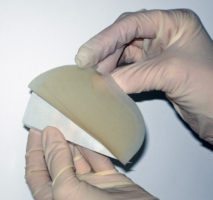The Continuum of Wound Dressings- Hydrocolloids
In this series, we’ve been discussing the many different types of wound dressings, in terms of indications and precautions. Let’s continue with a discussion of hydrocolloid wound dressings
Hydrocolloids
Hydrocolloid wound dressings contain hydrophilic (absorbing or distilling in water) colloidal particles, such as pectin, carboxymethylcellulose or gelatin. These dressings absorb fluid slowly and turn into a gel-like mass. When these dressings are removed, it is not unusual for some residue to remain in the wound bed, which can sometimes be mistaken as a sign of infection due to its odor. Hydrocolloids come in a variety of shapes and sizes and should be secured to a small border of intact skin. These dressings due have a tendency to roll; some manufacturers have overcome this issue by beveling the edges of the dressing so that they will not roll in areas of high friction. It’s important to know that these dressings are impermeable to oxygen and water, as well as bacteria. They provide thermal insulation to the wound, which helps to maintain the wound bed at a constant temperature. These dressings provide superior protection against infection compared to dressings of the sheet hydrogel, semipermeable film and foam or gauze classes.
Indications
These dressings are used most commonly on pressure ulcers; however, they can also be used on:
- granular wounds
- partial and full-thickness wounds
- necrotic wounds
- minor burns
- venous insufficiency ulcers
- heavily exudating wounds (hydrocolloid pastes and powders can be used to fill deep cavities)
Precautions
There are several situations in which these dressings should not be used:
- Heavily draining or actively bleeding wounds- hydrocolloids absorb fluids slowly, thus they should not be used on wounds which are producing fluid (such as blood) very quickly
- Infected wounds- although hydrocolloids can help to prevent infection, they should not be used on wounds that are already infected due to their occlusive property
- Immunosuppressed patients- the rate of anaerobic infections is higher under hydrocolloid dressings, as anaerobic bacteria are not dependent on oxygen; these dressings should be used with caution on patients who are immunocompromised due to the possibility of silent infection
- Hypergranulation- hydrocolloids have been associated with the formation of granulation tissue, therefore hydrocolloid use should be discontinued if there is any sign of hypergranulation in a wound.
- Dry wounds- because of their amazing ability to absorb large amounts of liquid, these dressings should not be used on relatively dry wounds or wounds that are only minimally exudative, as dessication of the wound bed may occur; they should also not be used when tendons or other structures are exposed for the same reason
- Poor skin integrity- these dressings are strongly adherent due to their adhesive backings, thus they should only be used on patients with intact skin surrounding the wound, so as to avoid worsening poor skin integrity; skin sealants and moisturizers should be used to protect the skin
If you are enjoying this series on wound care products, you may consider becoming certified as a wound care professional. Wound Educators is the premier online wound education site, preparing professionals to become nationally certified. If you would like to learn more about becoming a certified wound care professional, please contact us.
Sources
Meyers, B (2008). Wound Management: Principles and Practice. 2nd edition. Pearson Prentice Hall. Upper Saddle River, New Jersey. pg. 128-130.
What you need to know about hydrocolloid dressings. Wound Care Advisor, May 2013. http://woundcareadvisor.com/apple-bites_vol2_no3/


great information.
Information was really effective